
King Solomon’s Mines – 1950
I’ll start off by saying something I hate hearing when I discuss movies with anyone: The book was better. Well, of course it was. The book is always better. But I have a reason for my opinion. First of all, the book by H. R. Haggard was a very good book. It was well written and had some great characters in it, like the evil Watusi witch, Gagool. But Hollywood has messed it up again.
In fact, there have been at least 6 movie adaptations and not one of them has followed the book. They all ignore the fact that the book was popular for a reason. They all seem to want a female lead and a romance to spice up the plot. In this 1950 version, the main protagonist, Allan Quatermain, played by Stewart Grainger, is set opposite Mrs. Elizabeth Curtis, played by Deborah Kerr. There was no Mrs. Curtis in the book.
But I’ll step down off my soap-box. The main plot follows Quatermain, the quintessential great, white hunter of Southern Africa. He is tired of the hardships of his profession, and is ready to call it quits. But then, in steps Mrs. Curtis and her brother John Goode, played by Richard Carlson. Her money does her talking for her and she hires Quatermain to become her guide on an expedition to find her missing husband who had been searching for the legendary mines of King Solomon.
At this point, the movie takes a little break from the story to become a safari travelogue of the dangers of the African wilderness. Of course, Mrs. Curtis, a rich woman who has never even been camping, has a harder time than the men who are obviously tougher than her. Not to be outdone by the insufferable men, Mrs. Curtis quickly learns how to handle the harsh conditions of the African wilderness.
During this segment of the film, the cinematographer really earned his pay. It was like watching a nature documentary with lions, elephants, porcupines, monkeys, snakes, rhinos, giraffes, hyena, crocodiles, hippos and cheetahs. Fortunately, there was a bit of an action sequence where the party somehow survives being killed in a stampede by hiding behind a convenient fallen tree branch. Never-mind that there was no tree around from which it might have fallen. There, we saw a great many gazelles and zebras trampling the plains.
Finally, we make it back to the plot and the romance between Quatermain and Mrs. Curtis. Along the way, the pick up a character who is pretty important in the book, but who is portrayed in the film as almost incidental. Umbopa, played by an actor named Siriaque, is an unusually tall and mysterious native who offers his services as a pack carrier. He is more committed than anyone to reaching the fabled land of the Watusi people, where King Solomon’s mines are rumored to be located.
In the book, they cross the desert sands, heading toward two snow-capped mountain peaks which were called Sheba’s Breasts. The movie changed them to the White Twins. When they cross the mountains and reach the land of the Watusi, they are treated like gods because the natives have never seen a white man before, or more specifically, their deadly weapons. There, they are taken to the diamond mines, sealed in by a treacherous Watusi guide. They find Mr. Curtis’s dead body, thus allowing for the romance between the widow and Quatermain to be acceptable to the Hayes code, escape the mines through an underground river, and return to the Watusi tribe just in time to see Umbopa kill the evil king. He becomes king and the white people are allowed to leave in peace. The end.
As for the acting in the film, it was generally overdone, so nothing special there. The costumes were adequate, but the makeup was not that good. I refer mostly to Quatermain and his darkened skin that made him look like he had at least a full two inches of caked-on makeup covering his face.
And I have to mention the big climax of the film. It should have been the fight between Umbopa and Twala, the usurper King of the Watusis, played by real Watusi actor, Baziga. Instead, that short sequence was overshadowed by the dance of the Watusis. And lest I forget, the Watusi people were supposed to be a secluded tribe of African natives that had only ever seen one or two white men. But their clothes were all made of the finest textiles from around the world. It is hard to believe that people still living in grass huts had the means to craft such fine, bright patterns into their clothing.
But all that being said, it was still a fun enough film to watch. And though I try not to let the ham-fisted fingers of Hollywood get in the way of my enjoyment of the film, the differences from the original book, which I enjoyed very much, were disheartening. The book had no female lead, and no romance. Actually, that’s not entirely true. It had an interracial romance between Captain Good and a Watusi woman named Foulata. Interracial romance in a book written in 1885? Now that would have made the movie racier! But don’t worry you white audiences of 1950. Foulata gets killed off before the end of the book.
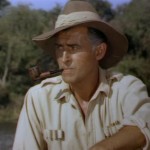
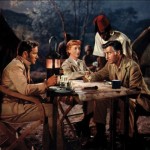
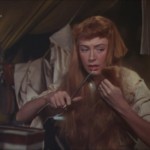
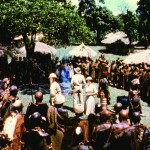
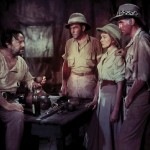
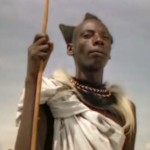
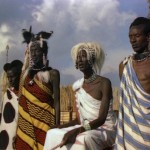
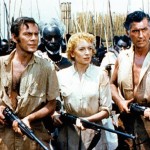
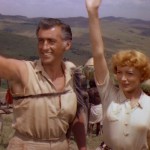
This movie is a big favorite of mine.